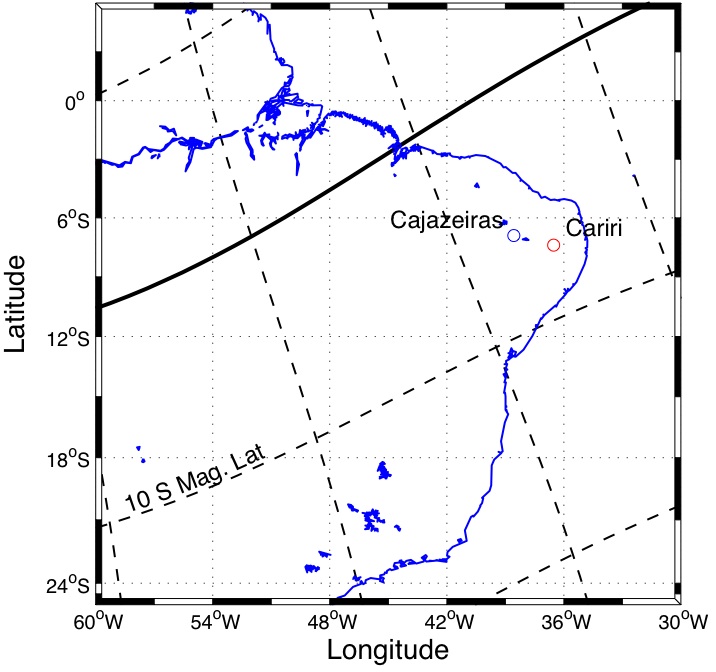Remote Equatorial Nighttime Observatory of Ionospheric Regions (RENOIR)PIs: Jonathan Makela of the University of IllinoisThe Remote Equatorial Nighttime Observatory of Ionospheric Regions (RENOIR) project is a joint collaboration between researchers from several institutions, including The University of Illinois at Urbana-Champaign, Clemson University, Cornell University, the Brazilian National Institute for Space Research (INPE) and the Federal University at Campina Grande (UFCG). Through the construction and deployment of a RENOIR station, we hope to come to a better understanding of the variability in the nighttime ionosphere and the effects this variability has on critical satellite navigation and communication systems. A suite of instruments dedicated to studying the equatorial/low-latitude ionosphere/thermosphere system, its response to storms, and the irregularities that can be present on a daily basis. The equipment comprising a single RENOIR station will consist of:
A RENOIR station can involve:
 The two stations,
Third station is situated in Marrakech, Morocco
RENOIR Page can be found in the Personal page of Prof. Makela (look here), Recently published articles: Meriwether, J. W., J. J. Makela, Y. Huang, D. J. Fisher, R. A. Buriti, A. F. Medeiros, and H. Takahashi (2011),
Climatology of the nighttime equatorial thermospheric winds and temperatures over Brazil near solar minimum, J. Geophys. Res., 116, A04322, doi:10.1029/2011JA016477 Chapagain, N. P. , Makela, J. J. , Meriwether, J. W. , Fisher, D. J. , Buriti, R. A. , & Medeiros, A. F. (2012). Comparison of nighttime zonal neutral winds and equatorial plasma bubble drift velocities over Brazil. J. Geophys. Res., 117(A6). doi:10.1029/2012JA017620 |